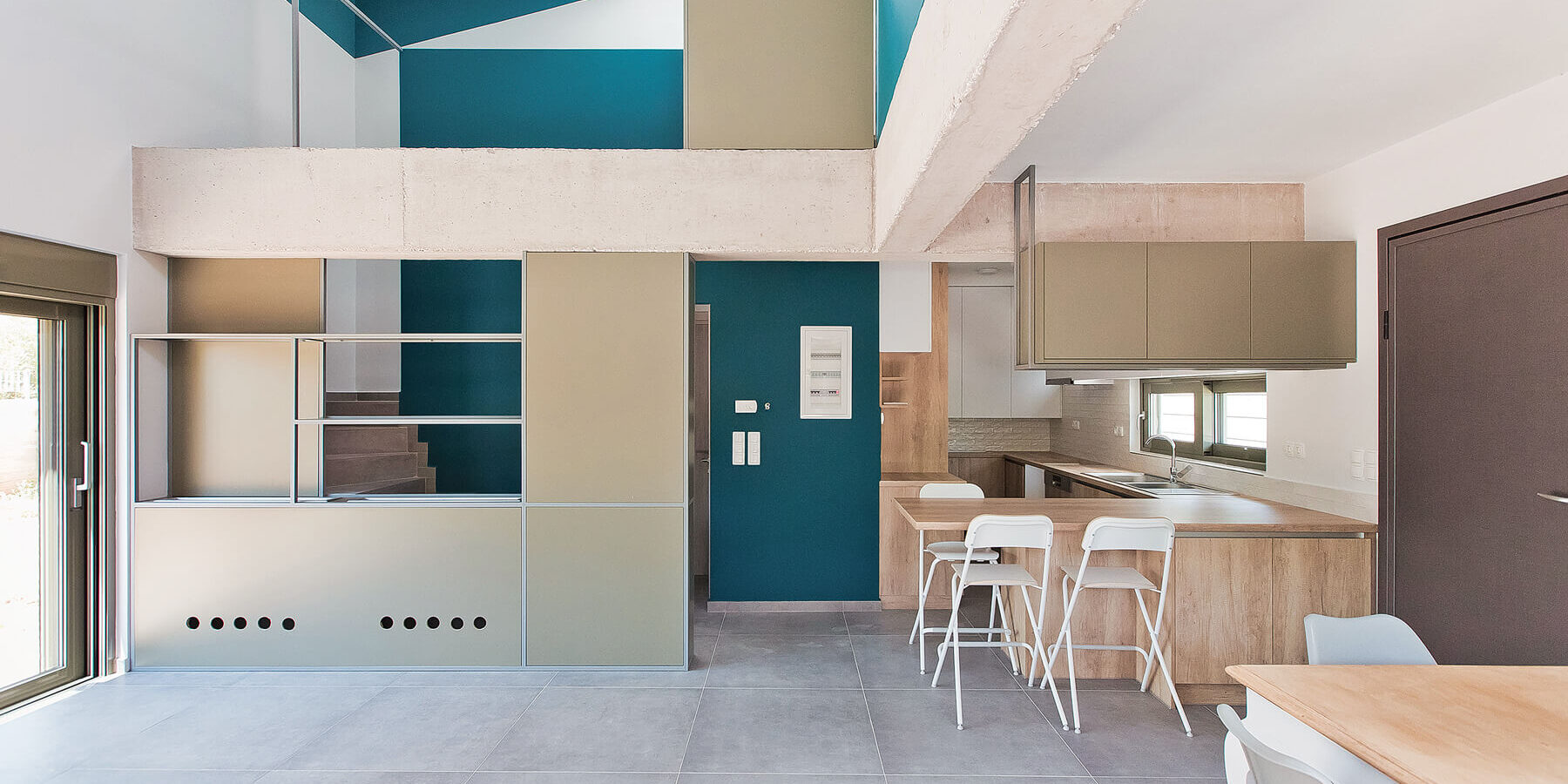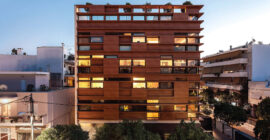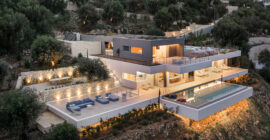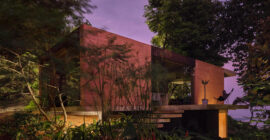Compact Volume
Location and Conceptual Framework
Situated in the suburban zone of Athens, at the base of Mount Hymettus, the 92m² residence is a testament to bioclimatic architecture and efficient space utilization. The design seamlessly integrates the characteristics of the location, a bioclimatic approach, and the functional needs of a six-member family.
Structural Composition and Spatial Organization
The residence’s architecture revolves around a monolithic volume, thoughtfully crafted both externally and internally. The spatial organization within this solid structure adheres to the static framework. A “T” configuration, defined by two load-bearing beams, cleverly distributes the living room, dining area, kitchen, staircase, and bedrooms to different sides. The choice of materials for the visible beams of the “T” accentuates the distinction between private and shared spaces.
Unveiling the Structural System
While the building exudes a sense of monolithicity, there are strategic interruptions that reveal the structural system. Examples include the projecting beam at the entrance and the balcony of the upper floor. These carefully placed interruptions, along with a corner window, add visual interest to the solid volume.
Double-Height Living Space: Connecting Indoors and Outdoors
A pivotal design element is the creation of a double-height living space on two levels, incorporating a mezzanine, dining area, and kitchen. This design choice establishes a strong visual and functional connection with the outdoors, extending the activities of the ground floor into the open and planted area of the plot.
Private and Communal Areas
The limited footprint is strategically utilized to create private relaxation spaces that are separated from communal areas on the same level and on the upper floor. This spatial arrangement is achieved through a cantilevered staircase, providing distinct zones for various activities.
Bioclimatic Design Principles
The architectural design maximizes the specific conditions of the site, incorporating optimal orientation and effective shading systems. Movable awnings, canopies, and pergolas are strategically employed to control sunlight and enhance energy efficiency.
Landscaping for Microclimate
The outdoor space is carefully landscaped with deciduous trees that offer shade and contribute to a pleasant microclimate. Pergolas and the plot’s enclosure support climbing plants, adding a touch of nature to the architectural design.
Passive-Bioclimatic Envelope
The residence’s envelope is designed to be passive-bioclimatic, promoting sustainable living. A substantial thickness of thermal insulation minimizes thermal bridges, contributing to energy efficiency.
Energy-Efficient Systems
To further enhance sustainability, the residence incorporates innovative technologies. An energy-efficient fireplace, a centralized heat pump air-conditioning system, and solar collectors on the roof collectively contribute to the low energy consumption of the building.
By seamlessly integrating these elements, the bioclimatic residence stands as a harmonious blend of architecture, design, and environmental consciousness, providing an optimized living space for the modern family.





